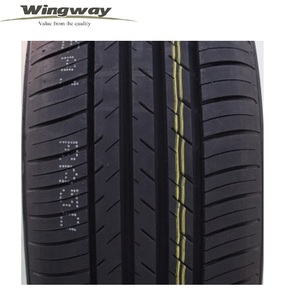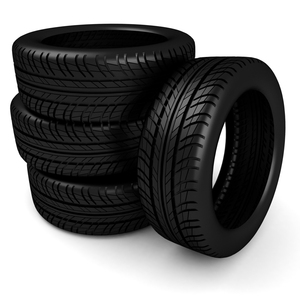(6208 products available)
















































































































































Used 4x4 tires come in various types, each designed to fit specific off-road driving needs. Here are some of the common types:
All-Terrain Tires
These tires are ideal for both on and off-road driving. All-terrain tires are versatile and offer good performance on various surfaces, including mud, rocks, and paved roads. They are a popular choice for 4x4 car owners who frequently switch between different types of terrain.
Mud-Terrain Tires
These tires are specifically designed for off-road enthusiasts who frequently encounter muddy terrain. Mud-terrain tires have deep treads and wide spacing, which help to expel mud and provide a better grip. They also perform well on rocky trails, but their on-road performance may be noisier and less fuel-efficient compared to all-terrain tires.
Rock Crawling Tires
For extreme off-road conditions, such as rock crawling, these tires are the best choice. They are made of a soft rubber compound, which provides excellent traction on rocky surfaces. The tread design is also aggressive, with large lugs that grip the rocks. However, these tires may wear out faster when used on paved roads.
Sand Tires
When it comes to driving on sandy deserts or beaches, these tires are specifically crafted. Sand tires have a low-profile design and wide footprint that helps to float on sand, preventing the vehicle from getting stuck. They are also suitable for high-pressure operation, which is essential for sand driving.
Winter Tires
In regions with cold winters and snow, these tires are a must-have. Winter tires are designed with specialized tread patterns and rubber compounds that provide excellent grip on snow and ice. While 4x4 vehicles can manage better on slippery roads, installing winter tires can significantly improve traction and safety during winter driving conditions.
Tyre Size
Used 4x4 tyres are available in a variety of sizes based on the vehicle specifications and drivers' desires. The size is written on the sidewall of the tyre and consists of three numbers and two letters. The first number is the tyre width in millimetres, the second number is the aspect ratio, and the last number is the rim diameter in inches. For example, a tyre with a size of 265/70R17 has a width of 265 mm, an aspect ratio of 70%, and a rim diameter of 17 inches.
Tread Pattern
Used 4x4 tyres have different tread patterns that perform differently on various surfaces. The symmetrical tread pattern has identical tread blocks on both sides of the tyre, providing uniform wear and a stable driving experience. The directional tread pattern has a V-shaped design that points in one direction, enhancing traction on wet and slippery surfaces. The asymmetrical tread pattern combines both symmetrical and directional patterns, offering versatility and better performance on dry, wet, and off-road surfaces.
Load Rating
The load rating is the maximum weight the tyre can support, while the speed rating is the maximum speed the tyre can handle. The load rating is represented by a number, such as 114, corresponding to a load capacity of 1,120 kg per tyre. The speed rating is represented by a letter, such as R for speed up to 170 km/h or H for speed up to 210 km/h.
Construction Type
The used 4x4 tyres can be of radial or bias-ply construction. The radial construction type has layers of steel belts and nylon cords running perpendicular to each other, providing better traction and durability. The bias-ply construction type has layers of polyester cords crisscrossing each other at a 45-degree angle, offering more flexibility and puncture resistance.
Used 4x4 tyres must be maintained to enhance their performance and durability. Here are some general maintenance tips:
Choosing the right used 4x4 tires for business can be a daunting task, but it doesn't have to be. With the right information, it is possible to source 4x4 tires that will meet the set budget and specifications. Here are a few tips to keep in mind while sourcing 4x4 tires:
Replacing 4x4 off-road tires can be a DIY project. However, it requires attention to detail. Here is a simple step-by-step guide on how to replace used 4x4 truck tires.
Find a Safe Work Area
The first step is to find a safe work area away from traffic. The area should be flat and well-lit. Off-road locations should be well leveled.
Gather Necessary Tools
All the necessary tools for the task should be gathered. This includes a jack, jack stands, lug wrench, new tire, and tire iron. A bead breaker and tire changer are needed if the old tire is being replaced.
Loosen Lug Nuts
Lug nuts should be slightly loosened while the vehicle is still on the ground. The right pattern should be followed to ensure even pressure is applied.
Jack up the Vehicle
The next step is to place the jack under the vehicle's designated jacking point. After the vehicle is lifted, the jack stands should be placed under the vehicle for added safety.
Remove Lug Nuts and Tire
Once the vehicle is secured, the lug nuts should be completely removed using the lug wrench. The tire should be pulled off the wheel hub after loosening the lug nuts.
Mount New Tire
The new tire should be aligned with the wheel hub. Once it is properly aligned, the lug nuts should be tightened in a crisscross pattern. This ensures even pressure is applied.
Lower the Vehicle
Once the new tire is mounted, the vehicle should be lowered. The jack should be removed after the vehicle is safely on the ground.
Check Tire Pressure and Alignment
Tire pressure should be checked using a tire pressure gauge. The manufacturer's recommended pressure should be followed. Proper tire alignment should be ensured before the vehicle is driven.
Dispose of Old Tires Responsibly
Old tires should be disposed of following local regulations. Many places have recycling programs for used tires.
Q: How long do 4x4 off-road tyres last?
A: The longevity of 4x4 off-road tyres depends on various factors, such as driving habits, tyre type, and road conditions. Generally, 4x4 tyres can last between 40,000 to 80,000 miles. However, the rough terrain of off-road locations can wear the tyres quickly.
Q: Can 4x4 tyres be used on a two-wheel-drive vehicle?
A: The Used 4x4 tyres can be fitted onto a four-wheel-drive axle. For better handling and driving experience, equip the two-wheel-drive vehicle with customised 4x4 wheels. Consult a mechanic for compatible options.
Q: What is the difference between all-terrain and mud-terrain tyres?
A: All-terrain tyres suit 4x4 vehicles for on-road and off-road use. They are quiet and fuel-efficient. Mud-terrain tyres are designed for challenging terrains like deep mud and sand. The former has a tighter tread design, while the latter has a more aggressive tread pattern.
Q: How do I know when to replace my 4x4 tyres?
A: Check the tread depth and wear. Use the 4-tread depth indicators to assess the condition of the 4x4 tyres. Uneven tread wear, cracks, and bulges are signs of tyre damage. Replace the tyres when they are worn out or after six years of use.